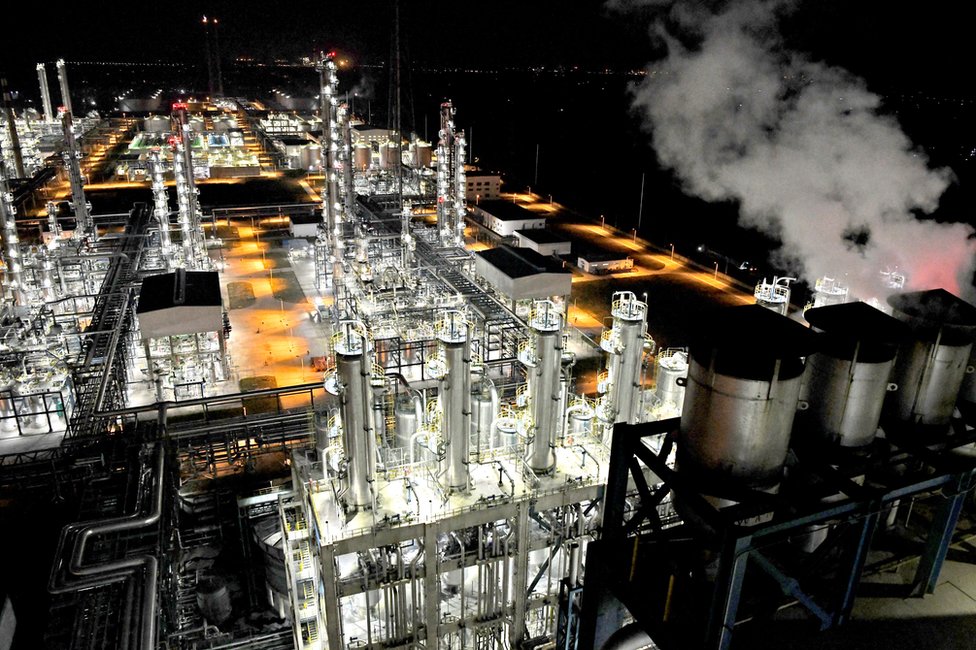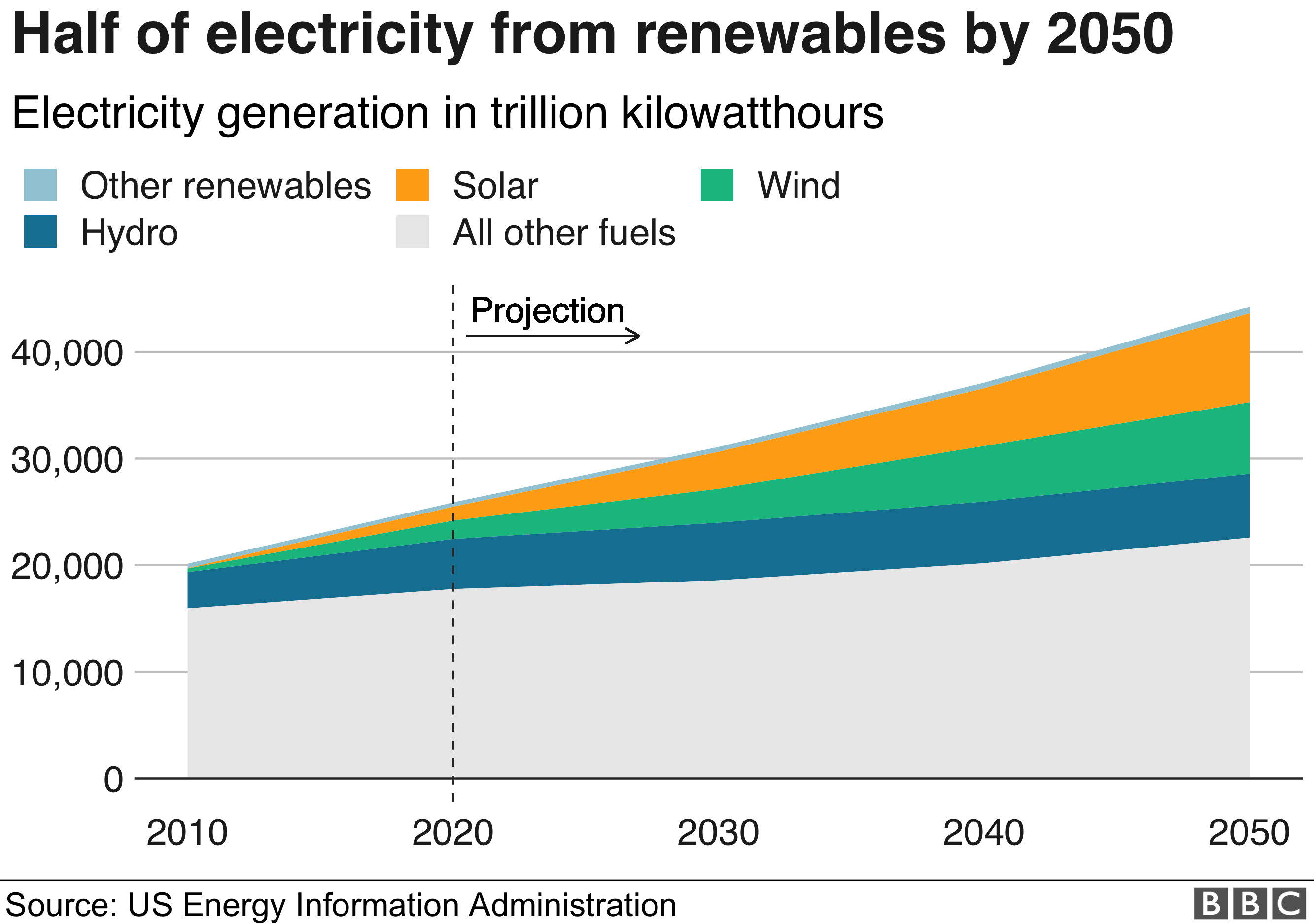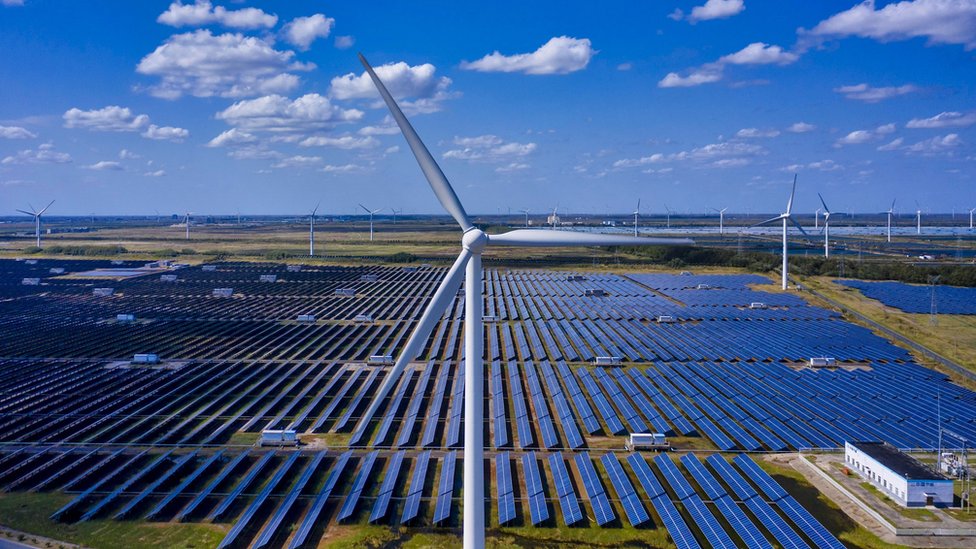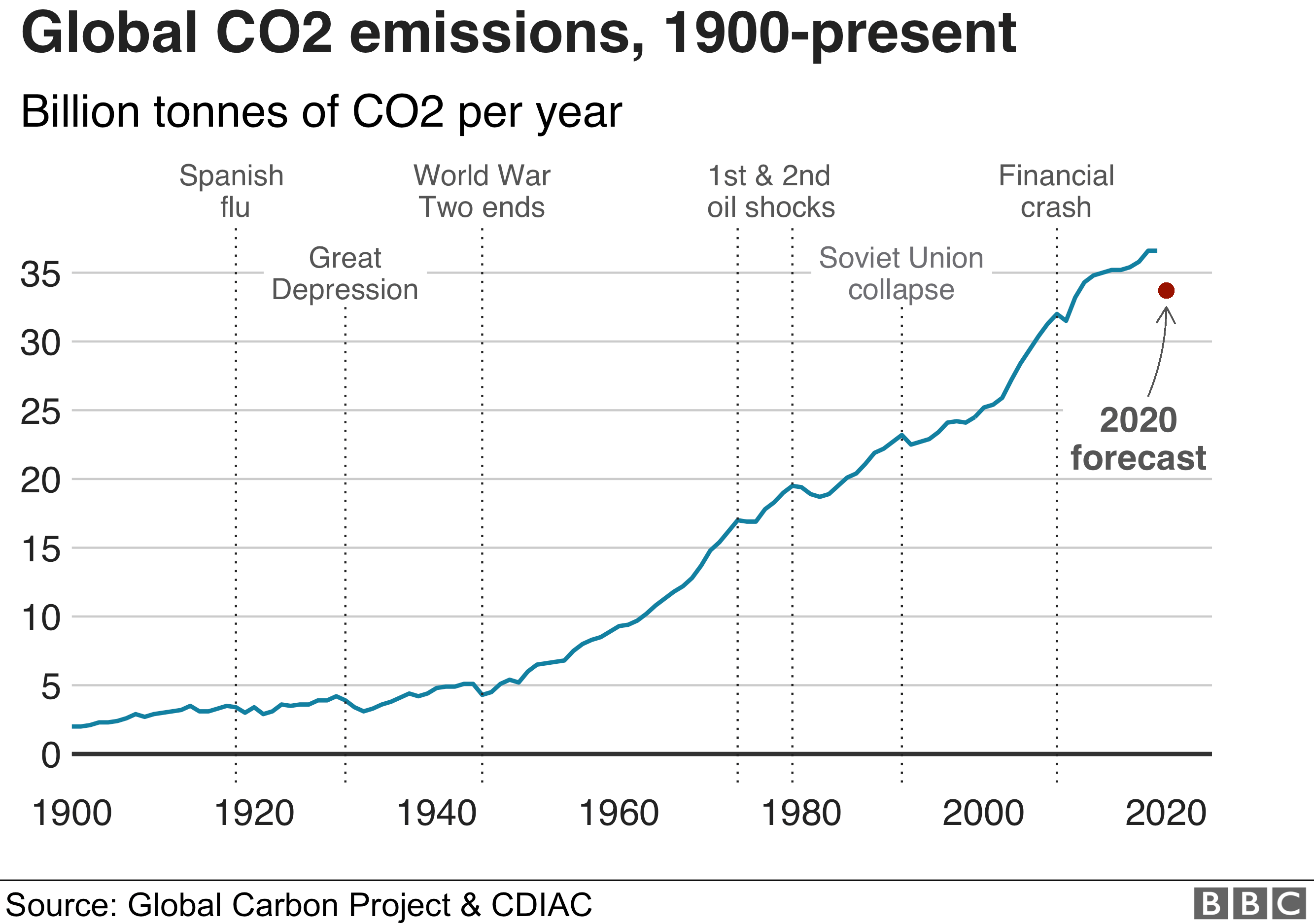 IMAGE COPYRIGHTGETTY IMAGES
IMAGE COPYRIGHTGETTY IMAGESCountries only have only a limited time in which to act if the world is to stave off the worst effects of climate change. Here are five reasons why 2021 could be a crucial year in the fight against global warming.
Covid-19 was the big issue of 2020, there is no question about that.
But I’m hoping that, by the end of 2021, the vaccines will have kicked in and we’ll be talking more about climate than the coronavirus.
2021 will certainly be a crunch year for tackling climate change.
Antonio Guterres, the UN Secretary General, told me he thinks it is a “make or break” moment for the issue.
So, in the spirit of New Year’s optimism, here’s why I believe 2021 could confound the doomsters and see a breakthrough in global ambition on climate.
1. The crucial climate conference
In November 2021, world leaders will be gathering in Glasgow for the successor to the landmark Paris meeting of 2015.
Paris was important because it was the first time virtually all the nations of the world came together to agree they all needed to help tackle the issue.
The problem was the commitments countries made to cutting carbon emissions back then fell way short of the targets set by the conference.
In Paris, the world agreed to avoid the worst impacts of climate change by trying to limit global temperature increases to 2C above pre-industrial levels by the end of the century. The aim was to keep the rise to 1.5C if at all possible.
 IMAGE COPYRIGHTGETTY IMAGES
IMAGE COPYRIGHTGETTY IMAGESWe are way off track. On current plans the world is expected to breach the 1.5C ceiling within 12 years or less and to hit 3C of warming by the end of the century.
Under the terms of the Paris deal, countries promised to come back every five years and raise their carbon-cutting ambitions. That was due to happen in Glasgow in November 2020.
The pandemic put paid to that and the conference was bumped forward to this year.
So, Glasgow 2021 gives us a forum at which those carbon cuts can be ratcheted up.
2. Countries are already signing up to deep carbon cuts
And there has already been progress.
The most important announcement on climate change last year came completely out of the blue.
At the UN General Assembly in September, the Chinese President, Xi Jinping, announced that China aimed to go carbon neutral by 2060.
Environmentalists were stunned. Cutting carbon has always been seen as an expensive chore yet here was the most polluting nation on earth – responsible for some 28% of world emissions – making an unconditional commitment to do just that regardless of whether other countries followed its lead.
That was a complete turnaround from past negotiations, when everyone’s fear was that they might end up incurring the cost of decarbonising their own economy, while others did nothing but still enjoyed the climate change fruits of their labour.
 IMAGE COPYRIGHTGETTY IMAGES
IMAGE COPYRIGHTGETTY IMAGESAnd China is not alone.
The UK was the first major economy in the world to make a legally binding net zero commitment in June 2019. The European Union followed suit in March 2020.
Since then, Japan and South Korea have joined what the UN estimates is now a total of over 110 countries that have set net zero target for mid-century. Together, they represent more than 65% of global emissions and more than 70% of the world economy, the UN says.
With the election of Joe Biden in the United States, the biggest economy in the world has now re-joined the carbon cutting chorus.
These countries now need to detail how they plan to achieve their lofty new aspirations – that will be a key part of the agenda for Glasgow – but the fact that they are already saying they want to get there is a very significant change.
3. Renewables are now the cheapest energy ever
There is a good reason why so many countries are now saying they plan to go net zero: the collapsing cost of renewables is completely changing the calculus of decarbonisation.
In October 2020, the International Energy Agency, an intergovernmental organisation, concluded that the best solar power schemes now offer “the cheapest source of electricity in history”.
Renewables are already often cheaper than fossil fuel power in much of the world when it comes to building new power stations.

And, if the nations of the world ramp up their investments in wind, solar and batteries in the next few years, prices are likely to fall even further to a point where they are so cheap it will begin to make commercial sense to shut down and replace existing coal and gas power stations.
That is because the cost of renewables follows the logic of all manufacturing – the more you produce, the cheaper it gets. It’s like pushing on an open door – the more you build the cheaper it gets and the cheaper it gets the more you build.
Think what this means: investors won’t need to be bullied by green activists into doing the right thing, they will just follow the money. And governments know that by scaling up renewables in their own economies, they help to accelerate the energy transition globally, by making renewables even cheaper and more competitive everywhere.
 IMAGE COPYRIGHTEPA
IMAGE COPYRIGHTEPA4. Covid changes everything
The coronavirus pandemic has shaken our sense of invulnerability and reminded us that it is possible for our world to be upended in ways we cannot control.
It has also delivered the most significant economic shock since the Great Depression.
In response, governments are stepping forward with stimulus packages designed to reboot their economies.
And the good news is it has rarely – if ever – been cheaper for governments to make these kind of investments. Around the world, interest rates are hovering around zero, or even negative.

This creates an unprecedented opportunity to – in the now familiar phrase – “build back better”.
The European Union and Joe Biden’s new administration in the US have promised trillions of dollars of green investments to get their economies going and kick-start the process of decarbonisation.
Both are saying they hope other countries will join them – helping drive down the cost of renewables globally. But they are also warning that alongside this carrot, they plan to wield a stick – a tax on imports of countries that emit too much carbon.
The idea is this may help induce carbon-cutting laggards – like Brazil, Russia, Australia and Saudi Arabia – to come onside too.
The bad news is that, according to the UN, developed nations are spending 50% more on sectors linked to fossil fuels than on low-carbon energy.
5. Business is going green too
The falling cost of renewable and the growing public pressure for action on climate is also transforming attitudes in business.
There are sound financial reasons for this. Why invest in new oil wells or coal power stations that will become obsolete before they can repay themselves over their 20-30-year life?
Indeed, why carry carbon risk in their portfolios at all?
The logic is already playing out in the markets. This year alone, Tesla’s rocketing share price has made it the world’s most valuable car company.
 IMAGE COPYRIGHTGETTY IMAGES
IMAGE COPYRIGHTGETTY IMAGESMeanwhile, the share price of Exxon – once the world’s most valuable company of any kind – fell so far that it got booted out of the Dow Jones Industrial Average of major US corporations.
At the same time there is growing momentum behind the movement to get businesses to embed climate risk into their financial decision making.
The aim is to make it mandatory for businesses and investors to show that their activities and investments are making the necessary steps to transition to a net zero world.
Seventy central banks are already working to make this happen, and building these requirements into the world’s financial architecture will be a key focus for the Glasgow conference.
It is still all to play for.
So, there is good reason for hope but it is far from a done deal.

To stand a reasonable chance of hitting the 1.5C target we need to halve total emissions by the end of 2030, according to the Intergovernmental Panel on Climate Change, the UN-backed body that collates the science needed to inform policy.
What that means is making the sort of emissions reductions achieved in 2020 thanks to the massive international lockdowns every year to the end of the decade. Yet emissions are already edging back to the levels they were in 2019.
The truth is lots of countries have expressed lofty ambitions for cutting carbon but few have yet got strategies in place to meet those goals.
The challenge for Glasgow will be getting the nations of the world to sign up to policies that will start reducing emissions now. The UN says it wants to see coal phased out completely, an end to all fossil fuel subsidies and a global coalition to reach net zero by 2050.
That remains a very tall order, even if global sentiments on tackling global warming are beginning to change.
